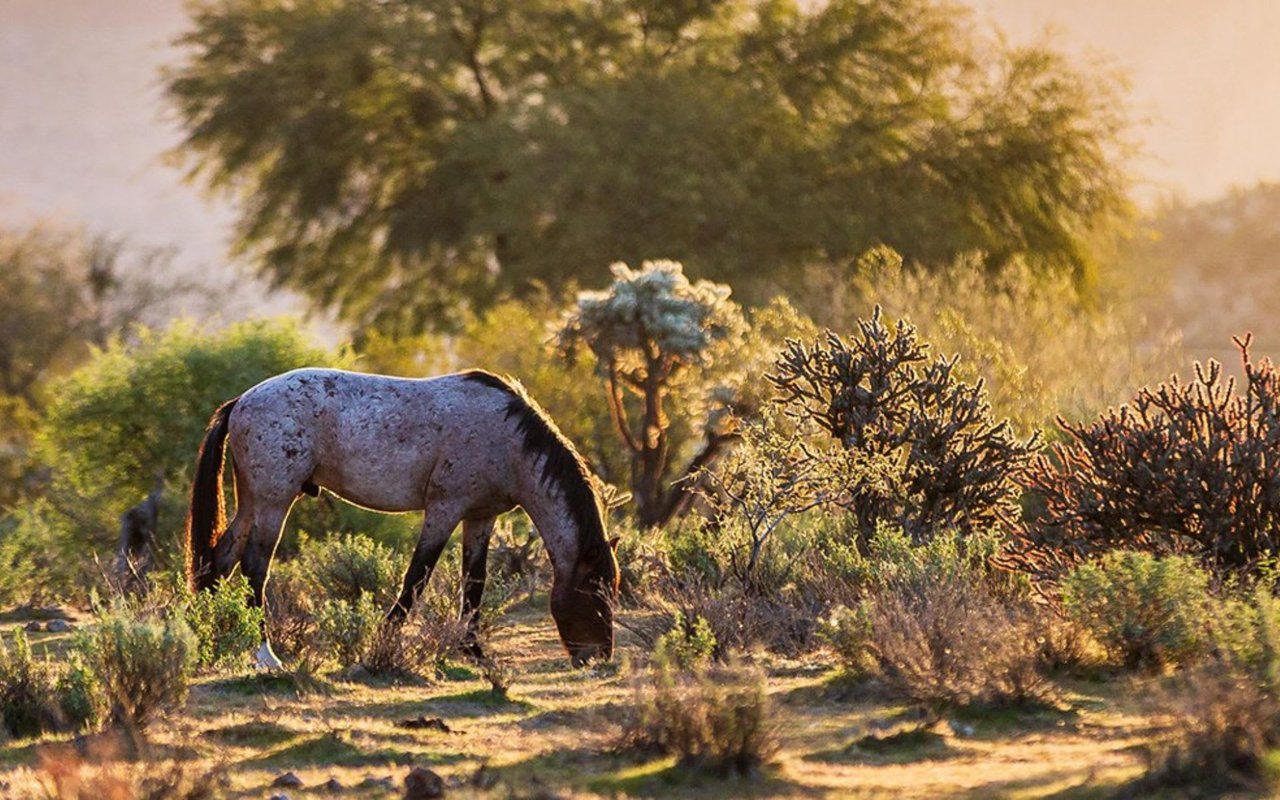Roaming the banks of the Salt River in the
Tonto Forest area is a majestic herd of native horses that are now under protection by the State of Arizona. These horses, part of the rich religious and native history of the region, are dwindling in numbers, yet beloved by nature and animal enthusiasts, and remain popular creatures to see when people visit or move to the Phoenix Area.
According to the January 25th, 1890 edition of the Arizona Champion Newspaper, the Salt River Wild Horses in Arizona were considered “native stock,” even then. At this time, the wild horses in Arizona would have had to be around in the area for at least five generations—around 100-150 years—for this classification to be open to them. This proves their life in the region back at least to 1790.
Historical records trace the lineage of these horses to Father
Eusebio Kino, who, in 1687, helped develop many different missions & stockyards all over the Tonto Forest and Sonora, depositing hundreds of the majestic horses across his creations. As the years went by, the number of horses grew exponentially, as animals do when they are left unmonitored. The numbers grew so much that explorers told stories of herds of “wild horses” that dwarfed even the herds of native bison roaming the land. These herds continued to grow and stories traveled until about 1850.
Around 1850, the Salt River Horses became the target of a massive killing spree, along with many other wildlife species all across the continental United States. Water buffalo, bison, and horses were hunted down, shot, poisoned, and killed simply because they took up space for cattle and aggressive, urban expansion.
In 2016, the Governor of Arizona signed a bill declaring them a protected species and “not-stray livestock.” Today, about 500 horses remain in the area, and the state wants to preserve their numbers and keep them from dwindling further.
Because of their rarity, they have become a popular attraction for nature-lovers, conservationists, and ecologists. As such, it is common for people to search online for “Wild Horses Near Me” or “Where to See Wild Horses” in the Tonto Forest area. There are several places to go to see these majestic creatures.
They are so named because of their habitat: they tend to confine themselves to the Salt River Valley, which stretches for nearly 200 miles and touches about 20 cities in the area. Here, the horses make their beds.
One of the best places to see the horses is
Coon Bluff, a recreational area 17 miles northeast of Mesa. Here, the grass has withered due to a complete lack of rainfall in the area, so trucks come and dump hay for the horses each day at around 5 pm. The horses are used to this feeding cycle, so they tend to start gathering here around 4 pm, which is the best time to come see the wild horses. They jump, play, fight for food, and do all the things that these untamed mustangs are wont to do.
After that, it might be more fun to see the horses swimming or playing in the river, so you might wait until after the feeding to catch them along the river banks near Pebble Beach or try to catch them before the feeding frenzy. You could also take a trip down to Granite Reef to go inner tubing, fishing, kayaking, or hiking.
All of these locations are well-known areas within the greater Salt River Recreation Area—part of the greater Tonto National Forest—and as such, a map from the national park can lead you safely and properly there, so long as you can follow the roads and trails. Each of these areas has functioning restrooms, though not all have water stations for public access, and if you plan on hiking or exploring outside of your vehicle, you will need to purchase a Tonto Pass.
If you’re lucky and bring your camera, you may catch some stunning photos of the horses at play or grazing on the hay. You might catch them wading into the waters of the
Salt River, or lunging at one another across the banks. Take and treasure your photos of these beautiful equine specimens, before they become endangered.
Always remember to observe the horses from a respectful distance. Stay back and marvel at nature from afar. Take it all in and respect the horses, and they—like any animal—respect you.

